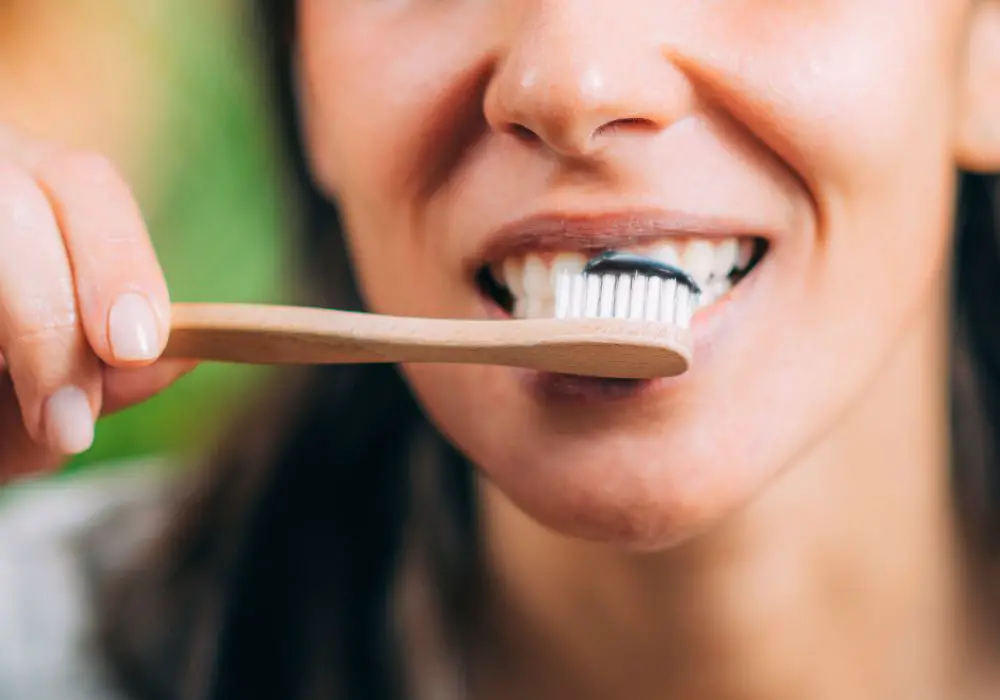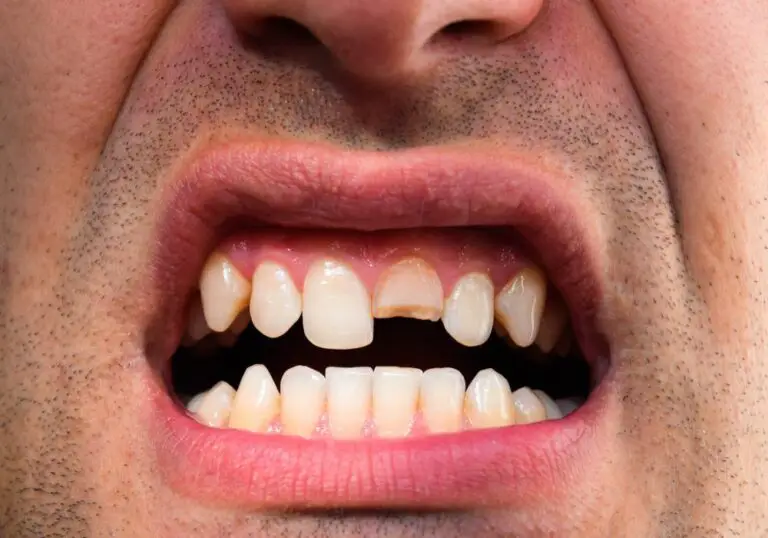Having discolored or yellow teeth can make you conscious about showing your teeth when you smile or laugh. Teeth can become stained or discolored over time due to lifestyle habits, dietary factors, medications, poor oral hygiene and natural aging. The good news is that there are many effective remedies and treatments available to conceal tooth discoloration and restore a bright, white smile.
What Causes Teeth Discoloration?

To understand how to fix discolored teeth, it helps to first know what causes teeth to become yellow, stained or darker.
Enamel Erosion
The enamel is the hard, white outer layer of the tooth that protects the softer dentin underneath. Acidic food and drinks can erode enamel over time, exposing the naturally yellowish dentin and causing teeth to appear darker. Frequent consumption of acidic foods and beverages such as citrus fruits, vinegar, carbonated drinks and even fruit juices can wear down enamel. Stomach acid from gastric reflux or bulimia can also erode tooth enamel.
Dentin Exposure
As we age, the gum line recedes and more of the yellowish dentin underneath the enamel becomes visible. This can make teeth look darker along the gum line. Exposed root surfaces from receding gums can also appear discolored.
External Stains
Common staining foods and drinks like coffee, tea, red wine, dark berries, tomato sauce and soy sauce can permanently stain and discolor the tooth enamel when consumed regularly over many years. This external stain buildup makes teeth look darker and yellowish. Tobacco smoke also causes brownish external stains as well as intrinsic stains.
Internal Stains
Trauma to the teeth that damages the inner pulp tissue and nerve can cause the affected teeth to darken over time. This is known as internal staining. Certain prescription antibiotics like tetracycline taken during the time of tooth development can also lead to intrinsic grayish-brown tooth discoloration.
Dental Fluorosis
Fluorosis caused by excessive ingestion of fluoride during early childhood can result in permanent staining and pitting of the tooth enamel. This gives a mottled appearance ranging from barely visible white specks to prominent brown markings.
Foods, Drinks and Medicines
In addition to the common staining culprits like coffee, tea and red wine, foods like soy sauce, blueberries and dark chocolate can also discolor teeth over time. Mouth rinses containing chlorhexidine and some metal supplements like iron can also stain teeth. Smoking tobacco causes brownish-yellow teeth staining.
How To Temporarily Whiten Discolored Teeth?

Here are some simple, affordable and effective home remedies to temporarily restore a few shades of whiteness and brightness to discolored teeth:
Use Whitening Toothpaste
- Look for toothpastes containing gentle abrasives and bleaching agents like silica, baking soda and hydrogen peroxide. These lift surface stains from the enamel by physical and chemical action when you brush.
- Avoid highly abrasive toothpastes with detergents that could erode enamel. Whitening toothpaste with carbamide peroxide is more gentle than hydrogen peroxide.
- Brush twice daily with whitening toothpaste for 2-3 months to see gradual lightening of teeth by a few shades. Brands like Crest 3D White and Arm & Hammer Advance White work well.
Try Teeth Whitening Strips
- Whitening strips that mold to your teeth contain peroxide bleaching agents that can effectively lighten teeth color by a couple of shades in 1-2 weeks with daily use.
- Opt for whitening strips with lower concentration of hydrogen peroxide if you have sensitive teeth. Strips with 5.25% hydrogen peroxide are gentle enough for daily use.
- Apply the disposable strips on clean dry teeth just before bedtime and leave on for 30-60 minutes daily depending on brand. Crest and Colgate make reliable, easy-to-use whitening strips.
Use Baking Soda
- Baking soda acts as a natural stain remover to lift surface discoloration and brighten teeth over time with regular use.
- Make a paste by mixing a teaspoon of baking soda with a few drops of water or lemon juice. Apply this with a soft bristle toothbrush and brush teeth for 2 minutes.
- Rinse thoroughly with water. Be gentle as baking soda can erode enamel if scrubbed too hard. Limit use to 1-2 times per week.
Try Activated Charcoal
- Activated charcoal has been used medically for years to absorb toxins and chemicals. It can bind to external stains that discolor teeth and remove them when brushed away.
- Mix a teaspoon of food grade activated charcoal powder with water or coconut oil to form a thick paste. Apply it on teeth and let sit briefly. Rinse your mouth thoroughly afterwards.
- Use this black colored remedy no more than 1-2 times a week as activated charcoal is abrasive. It can wear out tooth enamel if overused aggressively.
Consider Oil Pulling with Coconut Oil
- Swishing or pulling a spoonful of edible coconut oil in your mouth for 10-20 minutes can help lift stains from teeth through a process called oil pulling.
- Spit out the oil after swishing it around the mouth and teeth. Rinse well with water. Brush teeth after 30 minutes to remove oily residue.
- This traditional Ayurvedic oral detox technique can also reduce bad breath, bacteria and gingivitis with regular practice.
Try Strawberries Mixed with Baking Soda
- Strawberries contain vitamin C, malic acid and enzymes that can help remove tooth discoloration. The fruit acids in strawberries produce a bleaching action.
- Mash a few ripe strawberries and mix with a pinch of baking soda until it forms a gritty paste. Apply this directly on teeth and let sit for 5 minutes before rinsing.
- Do this simple whitening remedy 1-2 times per week for best results. The vitamin C and baking soda have a synergistic action to brighten teeth.
Use Apple Cider Vinegar
- Rinsing with diluted raw, unfiltered apple cider vinegar can help lighten intrinsic and age-related yellowish discoloration of teeth over time.
- Mix 2 teaspoons of apple cider vinegar with 1 cup of water. Swish this around in your mouth for a minute before brushing teeth. The acetic acid kills bacteria and bleaches stains.
- Repeat this daily. But limit contact time to prevent erosion of tooth enamel by the acidity. Discontinue use if you experience tooth sensitivity.
Avoid Stain Causing Foods and Beverages
- Restrict consumption of staining foods and drinks like coffee, tea, red wine, dark berries, tomato sauce, soy sauce and tobacco to prevent worsening of tooth discoloration.
- Have staining beverages only during mealtimes rather than sipping throughout the day. Drink them through a straw to minimize contact with teeth. Swish water after to wash away pigments.
- Keep your intake of sugary snacks in check as sugar supports bacterial growth that releases tooth-staining acids.
Long Term Solutions for Permanently Whitening Teeth
While home remedies can temporarily improve tooth color, professional whitening treatments and dental procedures give longer lasting results to make your smile brighter by several shades.
Get Dental Cleaning and Polishing
- Regular dental cleanings are important to prevent buildup of tartar, plaque and extrinsic stains that can yellow teeth.
- Professional cleaning scrapes off colonies of pigmented bacteria and deposits that regular brushing leaves behind. This can instantly brighten teeth appearance.
- Your dentist or hygienist will also polish away surface stains for whiter teeth. Cleanings every 6 months are recommended for optimal oral health and whiteness.
Try In-Office or At-Home Teeth Whitening
- In-office power whitening at the dentist provides the fastest results, with lightening up to 8 shades in about an hour. A concentrated peroxide gel is applied on teeth and activated with UV light.
- Professionally dispensed, customized-fitted whitening trays with carbamide or hydrogen peroxide gel give a more gradual whitening effect at home. These are worn for 1-2 hours daily for up to 6 weeks.
- Over-the-counter whitening kits with trays are cheaper but typically less potent than professional kits from your dentist. But results are still visible within a couple of weeks.
Consider Dental Veneers
- Veneers are thin shells made of porcelain or composite resin that adhere to the front of teeth. Putting veneers is a great way to permanently cover and change the color of discolored teeth.
- Veneers can brighten smile by up to 7 shades with minimal removal of natural tooth structure. Results are dramatic and long lasting with proper dental care.
- Veneers are more expensive than other whitening treatments but provide the most consistent and permanent color change for severely discolored teeth.
Try Dental Bonding
- Bonding improves the appearance of discolored, chipped or misshapen teeth by applying tooth-colored resin material to the surface of the problem teeth.
- The resin bonds chemically with the underlying tooth structure with the help of a conditioning liquid. This can reshape uneven teeth and mask intrinsic stains.
- Bonding results are not as dramatic or long lasting as veneers. But bonding is a cheaper and non-invasive option for mild to moderate discoloration of front teeth.
Consider Dental Crowns and Bridges
- Crowns are artificial tooth covers custom-made to fit over severely decayed, damaged or discolored teeth. The inner metal structure is layered with tooth-colored porcelain or resin for a natural appearance.
- Crowns cap the entire visible tooth to fully camouflage dark intrinsic stains. Veneers only cover the front surface.
- Bridges also utilize crowns on the teeth on either side of a gap to support the prosthetic false tooth filling that gap.
- Crowns and bridges are relatively expensive dental work and usually reserved for cases of extensive damage. But they can greatly improve smile aesthetics.
Maintain Good Oral Hygiene and Regular Dental Care

Practicing proper oral hygiene and getting regular professional teeth cleaning are key to prevent worsening of tooth discoloration over the long run.
- Brush teeth thoroughly twice daily using a soft bristle toothbrush. Use whitening or enamel-safe toothpaste.
- Floss daily and use antiseptic mouthwash to maintain gum health and slow buildup of stains.
- See your dentist every 6 months for a checkup and dental cleaning to catch any emerging problems early.
- Monitor lifestyle habits like smoking, drinking staining beverages, drug use and poor diet that can worsen tooth discoloration.
Frequently Asked Questions
What causes yellow teeth?
The most common reasons for yellow teeth are thinning of the enamel layer, accumulation of external stains, aging, dental injury, excess fluoride intake during childhood, and antibiotics or medicines taken during tooth development. Staining foods, acidic food and drink and tobacco use also promote yellowing over time.
Can teeth naturally become whiter?
Yes, minor improvement in intrinsic tooth color can occur after having staining foods or medicines discontinued or reduced for some time. For instance, quitting smoking can slowly help yellowed teeth regain their natural whiteness. But for significant whitening, additional treatments are required.
How often can I safely use baking soda to whiten teeth?
Baking soda is a mild abrasive that can wear down enamel with overuse. Limit its use to 1-2 times per week for 2-3 minutes when brushing. Mix baking soda with lemon juice or hydrogen peroxide to enhance results. Test on a small patch first to check for enamel sensitivity.
Does activated charcoal work to whiten teeth?
Activated charcoal has strong stain absorbing properties that help pull some external stains out of the enamel, temporarily brightening smile. But charcoal is also abrasive like baking soda, making overuse risky for your enamel. Limit use to once or twice a week at most for teeth whitening.
Can I use hydrogen peroxide daily for teeth whitening?
Hydrogen peroxide whitens teeth by bleaching action. While dilute hydrogen peroxide of 3% concentration is safe for daily use, stronger formulations can weaken enamel over time. Limit whitening gels with 6-10% hydrogen peroxide to once every few days for 30-60 minutes max. Discontinue if you notice heightened sensitivity.
How long do dental veneers last?
With proper oral care, dental veneers can last 7-10 years or longer before needing replacement. Avoid biting hard objects, cut apples/carrots carefully, wear night guard if grinding teeth to prevent veneer chipping or dislodging. See your dentist promptly if a veneer feels loose.
Conclusion
Discolored teeth can be an embarrassing problem, but multiple effective and affordable treatment options exist ranging from natural home remedies to professional dental procedures. Working with your dentist, you can find the safest whitening methods that fit your specific needs and budget. Proper oral care and making lifestyle changes can prevent future discoloration and help you maintain a whiter brighter smile for years.







